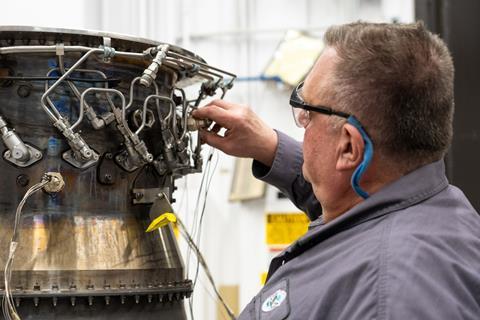New research and development funding will become available later this year for UK aerospace firms working on technologies designed to cut the aviation industry’s non-CO2 emissions.
Provided through the Aerospace Technology Institute (ATI), the funding forms part of the body’s Non-CO2 Technologies Roadmap, which was published on 20 March.

Developed with “input from almost 100 leading experts from across aerospace and academia”, the roadmap informs activities to be prioritised for funding under a new ATI programme focused on non-CO2 emissions to open in May 2024.
It forms the fourth strand of the UK’s aerospace technology strategy as part of its Destination Zero blueprint for achieving net-zero aviation by 2050.
Previous roadmaps covered ultra-efficient technologies, zero-carbon technologies and cross-cutting enabling technologies.
Non-CO2 emissions include oxides of nitrogen, carbon monoxide, water vapour, particulates and contrails.
While non-CO2 emissions are acknowledged to contribute to global warming – which some suggests could be greater than the impact of CO2 alone – the ATI says “there remains a high level of uncertainty as to [their] quantified impacts”.
It plans to prioritise research in three areas: fuel characteristics – including of both hydrogen and sustainable aviation fuels (SAFs); aircraft technologies such as sensing and measurement systems, and combustion developments; and what it calls “knowledge, data or operations” or studies related to modelling, measurement and data correlation.
“While three areas have been identified as key to delivering reductions in climate impact, addressing these will also require consideration of the interdependencies and potential unintended consequences of mitigations,” it adds.
The ATI programme is the industrial arm of a wider programme looking at aviation non-CO2 emissions run in partnership with the Department of Transport and the Natural Environment Research Council (NERC).
In October 2023, NERC launched a £10 million ($12.6 million) call for academic-led collaborative research proposals, with the winners expected to be announced this spring.
The results of that research will “not only underpin the development of more sustainable aerospace technologies, but also drive the adoption of better fuels and new operational measures”, says the ATI.
Elsewhere, Pratt & Whitney and the US Federal Aviation Administration (FAA) have announced a collaboration with the Missouri University of Science and Technology, Aerodyne Research and the Environmental Protection Agency to study non-CO2 aviation emissions.
As part of the FAA’s ASCENT programme, the project will measure emissions from a P&W geared turbofan engine combustor rig test stand using both conventional Jet A and 100% SAF. The partners will collaborate on test design, execution, and emissions data analysis.
“As the aviation industry targets a goal of net-zero CO2 emissions by 2050, we continue to pay close attention to addressing the environmental impact of other emissions, including cruise non-volatile particulate matter and NOx,” says Sean Bradshaw, senior technical fellow of sustainable propulsion at P&W.
“Combustor rig tests with 100% SAF provide a controlled environment for generating valuable baseline data, which will support future studies using full scale engines on-wing at ground and flight test conditions.”
The rig tests will take place at Pratt & Whitney’s facility in Middletown, Connecticut, using an advanced Rich-Quench-Lean combustor.































